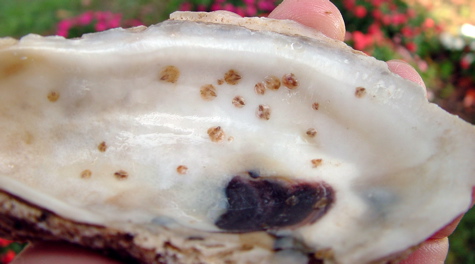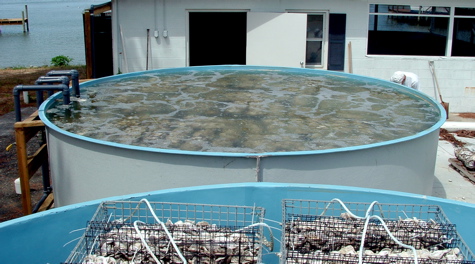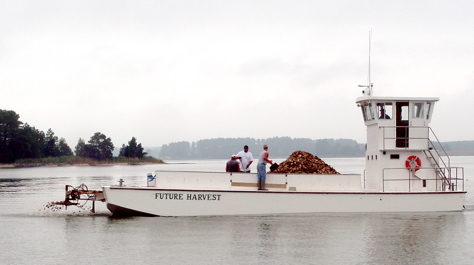VIMS releases manual to help oyster growers
A group of Virginia scientists and seafood companies has collaborated to produce “A Practical Manual for Remote Setting in Virginia,” a booklet that will help oyster growers implement an alternative culture method called “spat-on-shell” or remote setting. The method could help expand oyster production for the shucked market in Virginia, which is currently limited by the availability of oyster seed and the labor-intensive process of cultivating single oysters.
Remote setting is a method of oyster cultivation in which oyster larvae and old oyster shells are mixed in a controlled environment in large tanks on land rather than in open Bay waters. After the larvae attach or “set” on the old oyster shells and metamorphose into seed or “spat” oysters, the resulting “spat-on-shell” is ready for almost immediate planting in the Bay where the spat will grow naturally until ready for harvest.
The primary advantage of spat-on-shell cultivation is that it requires less labor and fewer materials than single-oyster cultivation, thereby making it a more economically feasible option for producing oysters. Because spat-on-shell cultivation produces oysters grown in clumps (similar to wild-caught oysters), the primary product is oysters for shucking rather than single oysters for half-shell consumption. For this reason remote setting is not meant to take the place of single-oyster culture (which produces consistent, high-quality, half-shell oysters) but to complement it with a means of producing, at large scale, a local oyster for use by Virginia’s oyster processors.
The remote-setting manual was written by Michael S. Congrove of W.E. Kellum Inc. and the Virginia Seafood Council, Dr James A. Wesson of the Virginia Marine Resources Commission, and Dr. Standish K. Allen Jr. of the Virginia Institute of Marine Science with collaboration from ten Virginia seafood companies and funding from the Virginia Fishery Resource Grant Program, which is administered by the VIMS Advisory Services department. The manual outlines a step-by-step process for obtaining oyster larvae, getting them to set on shells, and growing them out to harvestable sizes. It also presents useful information about oyster biology, facility set-up, and costs.
To obtain a copy of the manual, go to the Virginia Fishery Resource Grant Program website or email vsgpubs@vims.edu.



